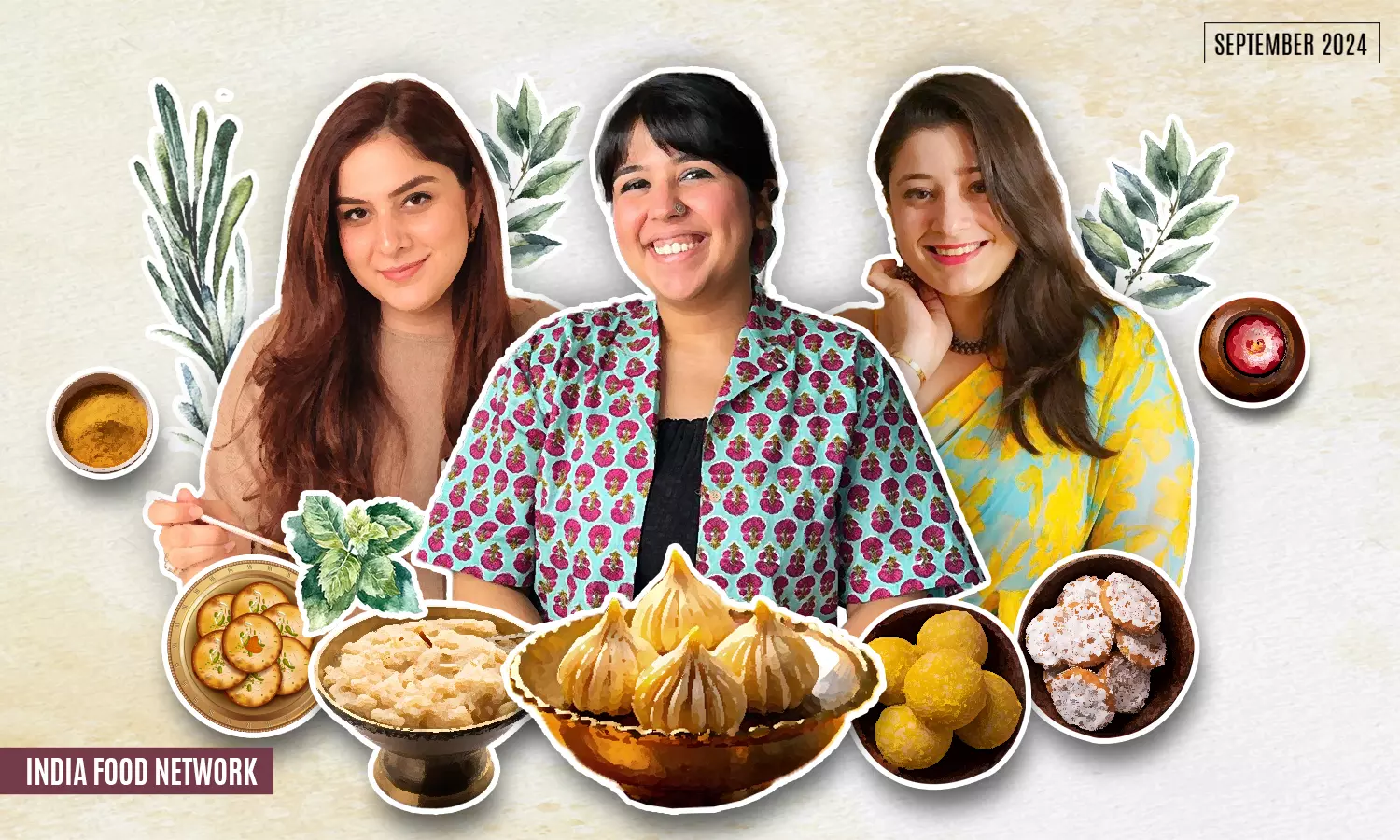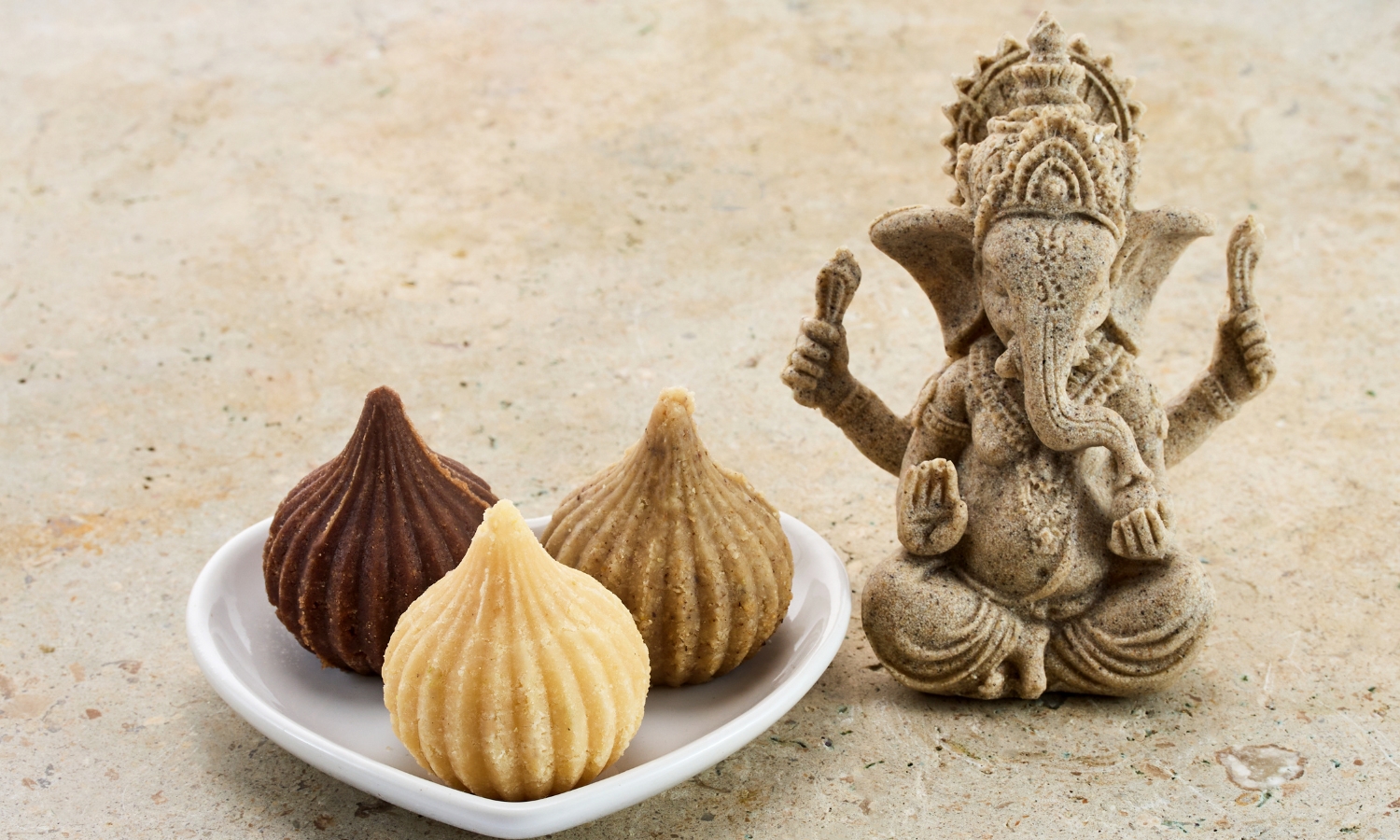Fusion Flavours for Ganesh Chaturthi: Redefining Tradition for the Modern Devotee
As spirituality takes precedence over traditionalism, the modern devotee seeks to celebrate festivals like Ganesh Chaturthi with a personal touch. Through innovative fusion dishes, culinary creators are honouring the spirit of tradition while embracing contemporary flavours and techniques.;

In the vibrant city of Mumbai, where the echoes of tradition blend seamlessly with the rhythm of modern life, Ganesh Chaturthi is celebrated with unmatched fervour. This festival, deeply rooted in culture and devotion, has become a canvas for culinary innovation, particularly for those who see the kitchen as a space for creative expression. For many modern devotees, Ganesh Chaturthi is not just about religious rituals, but also about personal connections, meaningful experiences and of course, delicious food.
As spirituality begins to take precedence over strict traditionalism, the way we celebrate and the food we prepare for festivals like Ganesh Chaturthi are evolving. The modern devotee is increasingly inclined to add personal touches to time-honoured recipes, blending the old with the new to create fusion dishes that resonate with today’s palates. These creations honour traditional flavours while introducing contemporary elements that cater to both nostalgia and novelty.
The Inspiration Behind Fusion Dishes
For many culinary creators, the inspiration to experiment with fusion dishes during festivals like Ganesh Chaturthi comes from a desire to connect with a younger, more diverse audience. Natasha Gandhi explains that festivals like Ganesh Chaturthi are deeply rooted in tradition and culture and they also present a unique opportunity to innovate and celebrate the evolving culinary landscape. She further adds that fusion dishes allow for the preservation of traditional flavours while introducing fresh, contemporary elements that resonate with modern sensibilities. This approach not only honours the cultural essence of the festival but also breathes new life into the festivities, making them more accessible and exciting for all.
While Chef Guntas feels the same, she says that she feels like the modern devotee is more spiritual than religious. It's more about the feeling of celebration and drawing from what you've seen over the years and adding your personal touch. And as the world progresses, we're less confined to traditional rules and more inclined to create new ones that resonate more with our individual beliefs.
Whereas Saloni Kukreja says that she loves playing with to variety of Indian flavours- whether it’s reimagining classics or using modern pastry techniques.

Balancing Authenticity with Innovation
The key to successful fusion cuisine lies in the delicate balance between preserving the authenticity of traditional recipes and introducing contemporary elements says Natasha Gandhi. She elaborates by adding that she starts by deeply understanding the traditional recipe—its ingredients, cooking methods, and cultural significance. Then, she carefully selects contemporary elements that complement rather than overpower the original dish. Her goal is to create something new yet familiar, paying homage to the tradition while offering a novel experience.
Chef Guntas on the other hand says that when merging a traditional dish with a modern touch or a different flavour, it's crucial to retain respect for both the original dishes or ideas. The fusion should complement each element. While it may not be entirely authentic, it should still honour the tradition.
Saloni Kukreja emphasises on the fact that balance is the key, you breakdown the recipe and see what are the acceptable changes - whether is a technique you use or a few ingredients that would blend well with traditional flavours and still keep the sweet close to the original.
Cultural Significance and Creative Fusion
Cultural significance plays a pivotal role in the creation of fusion dishes for festivals like Ganesh Chaturthi. Fusion cuisine, at its best, is not just about mixing flavors—it’s about blending stories, rituals, and emotions. As Natasha Gandhi points out, that each dish she creates for a festival like Ganesh Chaturthi is rooted in respect for the traditions and the stories behind them. By understanding the cultural importance of the ingredients and the dish, she can thoughtfully introduce fusion elements that enhance the dish’s meaning and relevance in today’s world.
Chef Guntas says that modern Indians love experimenting and are open to trying new fusion recipes. Take, for example, the Rasmalai Cake, a fusion of traditional Indian sweets with the globally popular tres leches cake, or the Gulab Jamun Churros, which offer a fresh take on beloved Indian and Spanish desserts. These creations honour the traditional ingredients while introducing an exciting twist, making them perfect for the modern palate.
Saloni believes that people prefer comforting desserts with ingredients in them that they are familiar with so keeping that theme in the recipe really makes all the difference. She further adds that it should be a classic dish with a slight twist.
A Spark of Innovation: Fusion Moments
The journey into culinary fusion often begins with a single, inspiring moment recalls Natasha Gandhi. That during family Ganesh Chaturthi celebrations, she noticed how the younger generation, including herself, was drawn to both the traditional sweets and newer, trendy desserts. This observation made her realize the potential of creating fusion dishes that could bridge generational gaps, making the festival more inclusive and exciting for everyone.
Such moments of inspiration have led to the creation of dishes like Nutella Mawa Modaks and Granola Modaks, which cater to both indulgent and health-conscious preferences. These innovative takes on traditional sweets have become instant hits, proving that fusion cuisine can successfully combine the best of both worlds.
Saloni Kukreja remembers the first time she tried Modak shaped bonobos which were a white chocolate and coconut jaggery Modak which she absolutely loved! It looked stunning and the textures were phenomenal. Such a refreshing take on a classic.
Fusion Beyond Borders
Fusion dishes for Ganesh Chaturthi are not just about combining international flavours with traditional Indian cuisine says Chef Guntas. They also involve blending different regional Indian cultures to create new and exciting dishes. For example, Brigadeiro Modaks—a Brazilian chocolate fudge shaped like traditional modaks—beautifully merge the spirit of Ganesh Chaturthi with a completely different flavour profile. Meanwhile, Rasgulla Tiramisu from Bombay Sweet Shop demonstrates how two seemingly disparate desserts can come together to create something extraordinary.
Health consciousness and dietary restrictions have also paved the way for innovative fusion recipes that incorporate healthier ingredients and cooking methods, ensuring that everyone can partake in the festive indulgence without guilt.
A New Culinary Tradition
The evolution of Ganesh Chaturthi through fusion cuisine is a testament to the modern devotee’s desire to celebrate tradition while embracing change. By balancing authenticity with innovation and respecting cultural significance, today’s culinary creators are crafting dishes that are both meaningful and delicious. These fusion flavours are not just about food—they’re about bringing people together, honouring the past, and celebrating the present in a way that resonates with everyone.
As Ganesh Chaturthi continues to evolve, so too will the flavours and dishes that define it, making each celebration a unique and personal experience for every devotee.

